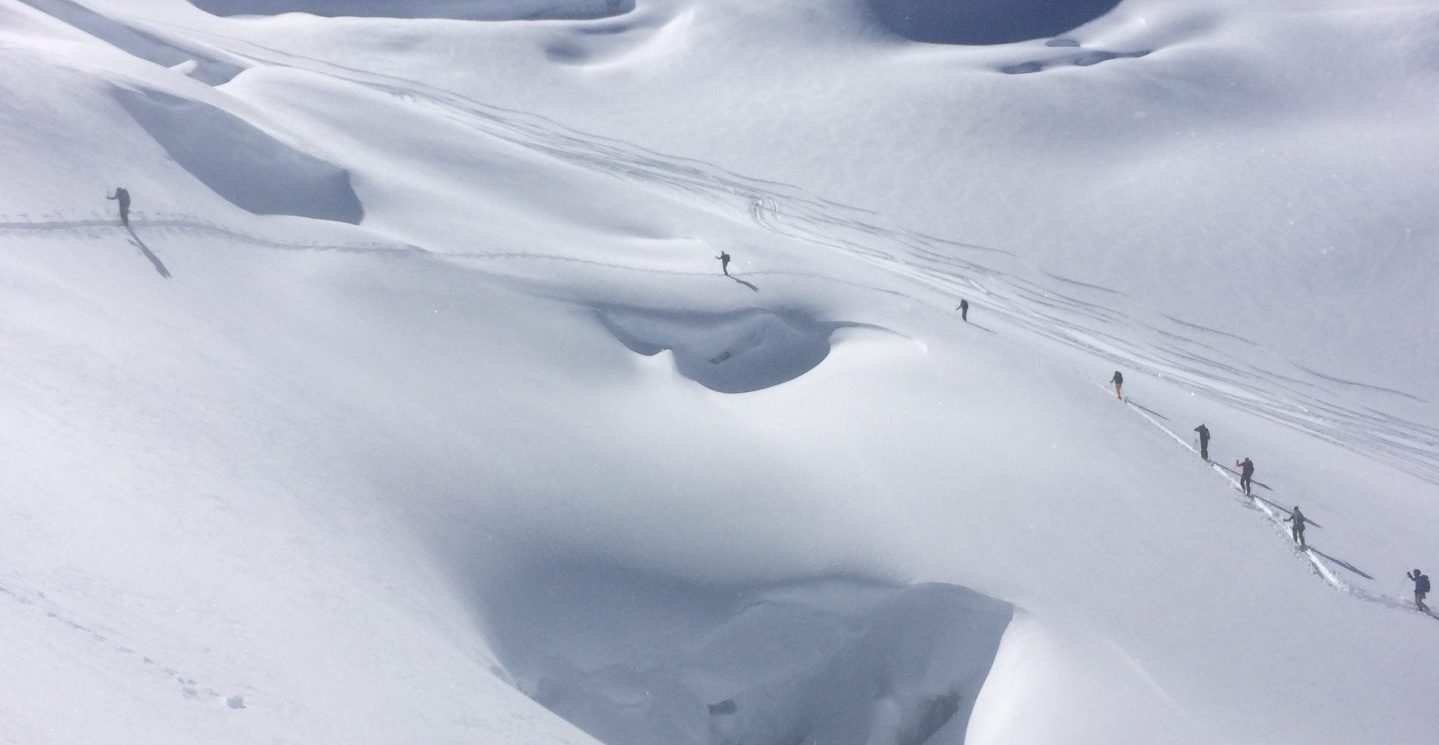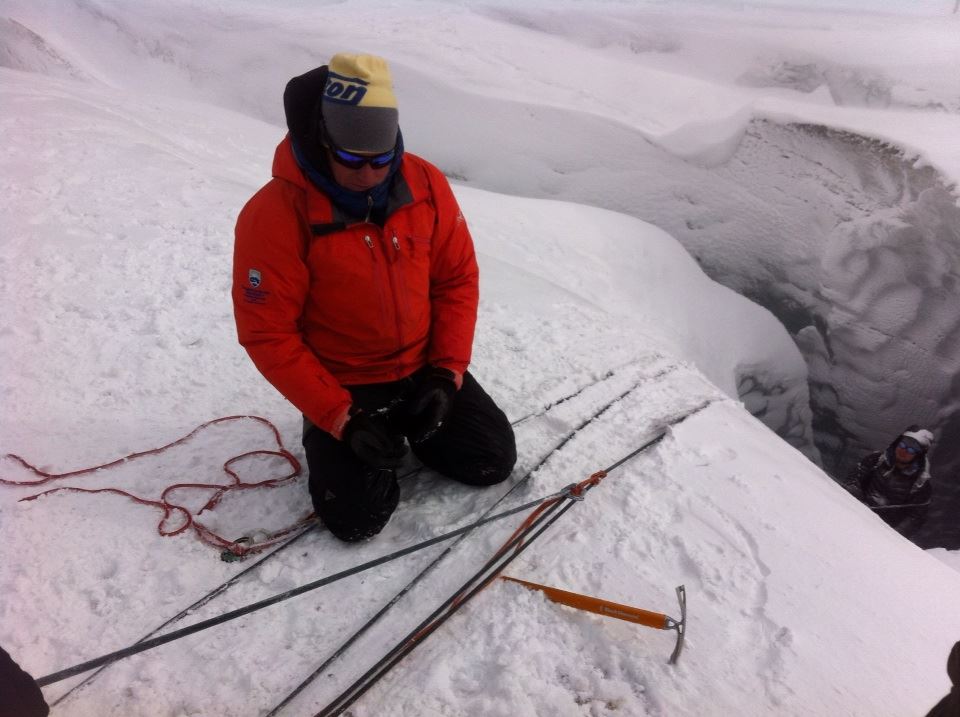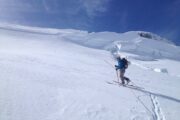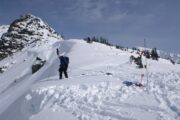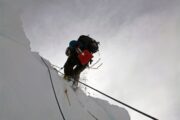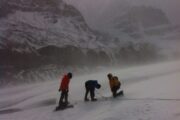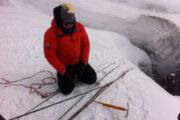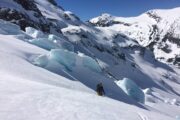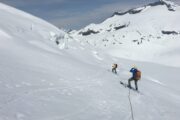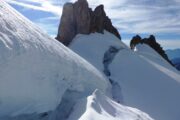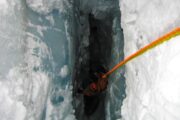Crevasse and Cliff Rescue For Backcountry Skiers
Learning to travel safely on glaciers is the next step after an AST course for backcountry skiers and boarders. Planning to do the Spearhead or Garibaldi Neve Traverse? This course provides an indepth understanding of glaciers and their unique hazards that lurk beneath the snow. Learning how to anticipate and avoid these hazards is key to staying safe. We ensure that you have the best technical rope rescue training should a crevasse incident occur. The right equipment and the skill to use it.
This course is designed specifically for backcountry skiers and boarders.
Who’s it for?
- Backcountry skiers and splitboarders with some prior ski touring experience
- AST 1
- Fitness for up to 2-4 hours of travel per day
Itinerary:
- Online Course: 1-2 hour online glacier theory and rescue systems course. Complete at your own pace during the week prior to field session.
- Field Day 1 North Vancouver: 8AM to 4PM
- Field Day 2 North Vancouver: 8AM to 4PM
You will learn the following:
- Glacier Theory
- Cornices
- Rope Foundations: knots, hitches, ratchets, harness tie-ins.
- Crevasse Rescue Systems: drop loop, hauls, advantages
- Cliff Rescue Techniques
- Building Rescue Quality Anchors
- Hazard identification and mitigation strategies
- Route Selection
- Safe Travel Techniques
- Roped up glacier travel techniques
- When to travelled roped or unroped
- Rescue Scenario
Important: You will be required to sign a waiver waiver at the commencement of the activity.
Private courses available on request. Contact us at info@bcskiguides.com for more information.
| INCLUDED |
|
||||
| NOT INCLUDED |
|
Day 1: Dry Land – Rope Skills Boot Camp
- Rope work 101: learn the basics of knots, hitches, ratchets, harness tie-ins, etc.
- Crevasse rescue systems: drop loop, 3:1 haul, 6:1 haul, advantages
Day 2: Field Day
- Roped up glacier travel techniques
- When it’s appropriate to ski unroped
- Identification of likely areas of hazard
- Route selection to minimize glacier hazards
- Anchors
- Rappel and rope ascending (time permitting)
- Rescue scenario
You will need the following gear for your day:
- Ski touring or splitboard equipment
- Ski gloves and lightweight gloves for ropework
- Helmet & Googles
- Avalanche Transceiver (Digital, 3 antenna)
- Avalanche Shovel
- Avalanche Probe
- 30-40l backpack
- Harness
- 4 locking carabiners, 2 non-locking carabiners
- 1 triple action locking carabiner with captive eye
- Black Diamond ATC, Petzl Reverso, or similar belay device
- 3x 7mm Prussik Cord (7mm cord, 5m length)
- Double length (120cm) dyneema sling
- Petzl Microtraxion (Optional)
- Petzl Tibloc (Optional)
- Pulley for >9mm rope (Optional)

